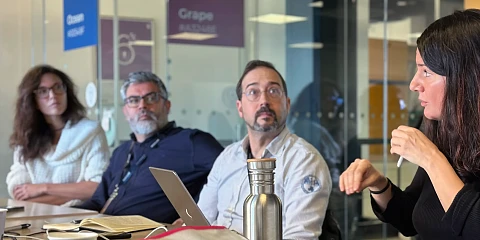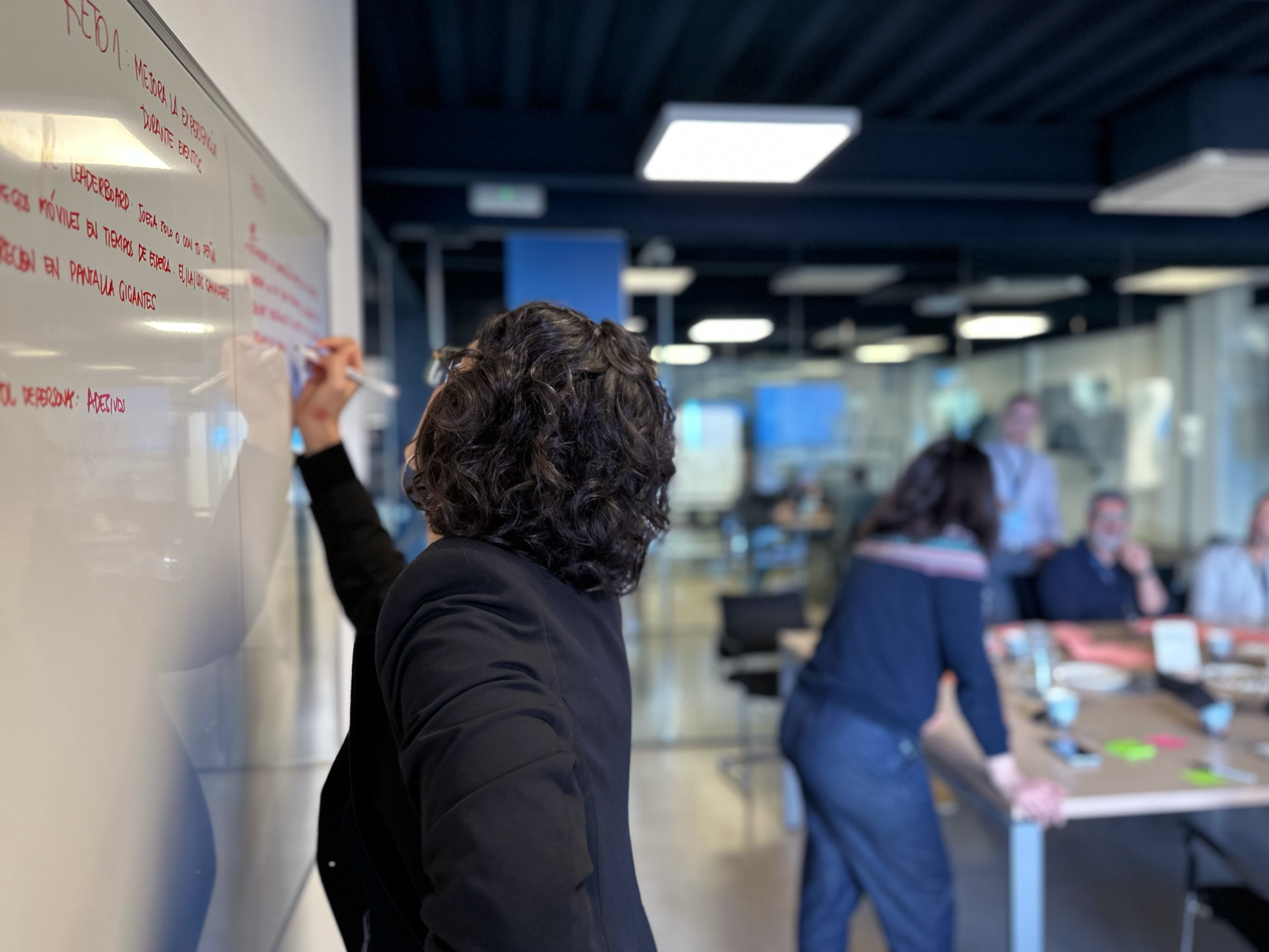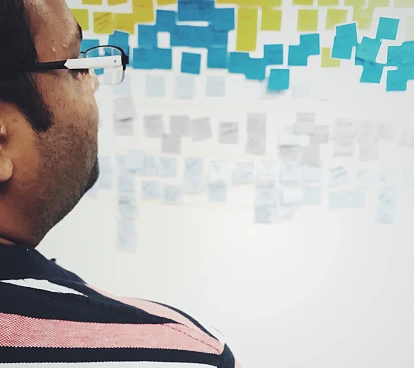
Scrum roles and responsibilities: a step towards transparency and engagement
January 23, 2025
You can read in this link the first article in this series: Agility, Complexity and Empirical Method
How are responsibilities divided within a Scrum team? How does the work of some help make the work of others possible?
Transparency and clarity are always important, but knowing what needs to be done, who is responsible for doing it and/or ensuring it happens helps simplify things, helps us understand how to collaborate and encourages engagement.
In order to ensure that we move forward and make decisions based on validated learning, on facts and not assumptions, and that we minimize waste, Scrum is necessarily iterative. We saw how Scrum was a framework designed to build adaptive solutions to complex problems. To ensure success, Scrum defines a set of rules that will guide the relationships and interactions of the people on the team. The three pillars of the empirical method (transparency, inspection and adaptation), the five values (commitment, focus, openness, respect and courage) and the necessary parts (events, artifacts and roles).
When we define the roles and responsibilities associated with each person, we are indicating what each team member should focus on in order to achieve the common objectives, and we are providing transparency and improving efficiency. Not only will we know what to focus on individually, but also how and when to provide or ask for help, when to be proactive or not. In other words, we facilitate collaboration and increase the probability of success, since having a good result does not depend on the individual actions of each person involved in a product or project, but on how well or poorly they collaborate with each other.
By being clear about our mission, our responsibilities and the expectations placed on us, it is easier to ensure commitment. Scrum defines the roles and responsibilities that are necessary to design teams that can deliver the desired incremental value in each sprint.
Equipment design and configuration
Scrum provides us with key tools to keep teams focused and evolve towards ever greater cohesion. But to ensure success, it is necessary that the team meets some more premises
-
That you have all the skills to create each sprint a valuable and useful increment. That is, all the knowledge and all the skills are within and/or available to the team.
-
Self-managed, they decide who does what, how and when. In other words, there are no hierarchies or sub-teams that limit this capacity for flexibility and agility to organize and make decisions.
-
The aim is to optimize communication and productivity. To this end, a team size is chosen that provides sufficient capacity to generate value in each sprint and remain agile. It is known that communication and productivity are better when teams do not exceed 10 members. When the product is very large, and to have an adequate time to market, we need more people. The recommendation is to make smaller teams that meet the above characteristics, and all of them sharing Product Backlog and Product Owner.
Another consideration is that the Scrum team must be responsible for all product-related activities, from research and experimentation to development, verification, operation, and maintenance. The entire Scrum team is responsible for creating a valuable and useful increment in each sprint
The design and configuration of teams is a complex issue for organizations. It is very common to find organizational structures that make communication difficult, that generate silos, that give little flexibility or that do not take advantage of the capacity that each of us could contribute.
Scrum defines three roles, with three main responsibilities: Product Owner, Developers and Scrum Master.

Product Owner roles
Knowing the business objectives, user needs, the problem to solve and the starting point is the best way to start a project, and in Scrum there is a specific role, the Product Owner, very focused on this area.
A product can be a service, a physical product, something more abstract, but it is always a vehicle to deliver value, and the Product Owner is the person responsible for maximizing it. Value is obtained as a result of the team's work in each sprint. The Product Owner must know perfectly the purpose of the product, the needs it solves, the target audience, the differential value, the value expected to be obtained from it, and must be able to transmit it to the rest of the people involved.
With respect to a product within an organization, there will be different stakeholders, different interested people who have their own objectives, their own particular interests. For example, we can have a marketing department that, in order to implement a user acquisition strategy, needs a specific development to be done; but we can also have an engineering department that, in order to improve performance, needs another specific development to be done. The capacity of the team is limited.
The Product Owner must be able to collect and prioritize the different needs based on value. He must be empowered to make decisions, and the organization must respect his decisions.
The product backlog, i.e., the features that we believe will help us achieve the product's mission, will be collected and prioritized in the Product Backlog. The Product Owner is responsible for the Product Backlog, it is his responsibility to include and prioritize any new element that is necessary. He is also responsible for ensuring that the team knows and understands each outstanding work item, and may delegate some of these tasks, but he is ultimately responsible for them.
The role of developers in Scrum
Developers are the people on the team who are committed to creating any aspect of a useful increment, of a functional increment in each sprint.
For Scrum the development team includes people from the required specialties; for example, a Designer, a UX expert or a QA can be part of the development team.
In order to engage and succeed in its mission to build a functional increment corresponding to the target set in the sprint planning, the development team must know and understand the target, and design a plan to achieve it. The plan comprises not only what the technical solution is going to be, but what tasks we have to perform to implement that solution and how we are going to organize ourselves to achieve it. Furthermore, it has to be a quality solution that is finished and ready to be put in the hands of the end users.
When is a task considered to be ready? To avoid mismatches in understanding the scope of tasks, an agreement called Definition of Done is used. The team's plan must ensure quality, it must comply with the Definition of Done. The plan is collected in the Sprint Backlog.
Then, during the execution of the sprint, day by day the development team is responsible for inspecting and adapting its plan towards the sprint goal.
The responsibility of being a Scrum Master
The Scrum Master is responsible for establishing and implementing Scrum as defined in the guide. To do so, he/she works at the service of: the organization, the Product Owner and the developers.
The first thing is to focus on everyone's understanding of Scrum theory and practice. In order to fulfill his or her mission, the Scrum Master must or can:
-
Empower the organization, help it plan the Scrum implementation, and become familiar with using the empirical approach to address complex problems.
-
It will help the Product Owner: finding techniques for effective goal setting; clearly and concisely communicating outstanding work items; planning the product with an empirical approach; and facilitating collaboration among stakeholders.
-
And it will help the development team by accompanying them on their journey to empower themselves to become a self-managed, cross-functional team. It will make it easier for them to stay focused on generating the incremental value that the DoD delivers. To do this, he will promote the removal of impediments, dependencies and blockages. It is important to understand that the Scrum Master is not the one in charge of eliminating these impediments, but to train the team and the organization to identify and anticipate the necessary things, and to know how to manage them. And he also ensures that all events are executed on time and accomplish their task.
Key ingredients
All roles and functions are necessary and important to achieve the desired and necessary product.
-
The Product Owner will be the person who will initially provide the focus for the team through the product objective; he/she will also determine the strategy through the prioritization of the different pending work items, on the different functionalities; and he/she will also provide transparency from the beginning by communicating clearly and concisely all these pending work items through the product backlog and his/her participation in the different events.
-
The development team is in charge of making the product a reality, with its knowledge, its capabilities, its flexibility to adapt and provide solutions efficiently. They are the ones who finally make the users have a solution in their hands.
-
The Scrum Master will help to follow the rules of the game, facilitate collaboration between all parties, seek full alignment of the team. He will also accompany everyone in achieving their missions, and in their development and maturity as a team.
And in this way, together they all manage, sprint by sprint, to have a working software that they can put in the hands of the users early on to receive feedback and learn, while they develop and mature as a team throughout the process.
Our latest news
Interested in learning more about how we are constantly adapting to the new digital frontier?

Tech Insight
January 13, 2025
How to bring your application closer to everyone

Tech Insight
December 19, 2024
Contract Testing with Pact - The final cheetsheet

Insight
December 18, 2024
Agility, Complexity and Empirical Method

Tech Insight
December 17, 2024
Google’s new quantum processor is here, but what does it really mean?
